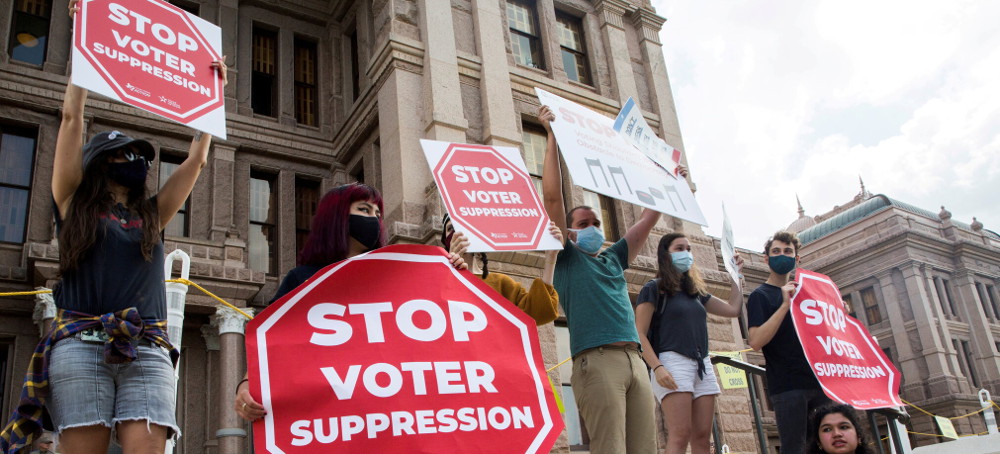New Voting Restrictions Could Make It Harder for 1 in 5 Americans to Vote
Caresse Jackman, Aliyya Swaby and Annie Waldman ProPublica Voting rights activists during a protest in Austin against the Texas voting legislation. (photo: Mikala Compton/Reuters)
Voting rights activists during a protest in Austin against the Texas voting legislation. (photo: Mikala Compton/Reuters)
Across the country, from California to Georgia, people like Olivia Coley-Pearson and Faye Combs are working through stigma and increased restrictions as they help people who struggle to read exercise their right to vote.
For all the recent focus on voting rights, little attention has been paid to one of the most sustained and brazen suppression campaigns in America: the effort to block help at the voting booth for people who struggle to read — a group that now amounts to about 48 million Americans, or more than a fifth of the adult population.
Across the country, from California to Georgia, people like Olivia Coley-Pearson and Faye Combs are working to help citizens with low literacy skills exercise their constitutional right to vote, but doing so requires fighting through stigma and increased restrictions on accessibility.
While new voting restrictions in states like Florida, Texas and Georgia do not all target voters who struggle to read, they make it especially challenging for these voters to get help casting ballots. ProPublica analyzed the voter turnout in 3,000 counties and found that places with lower estimated literacy rates tended to also have lower turnout.
See for yourself: For the launch of its Right to Read series, ProPublica partnered with Gray TV’s Investigate TV team, which produced the segment above.



